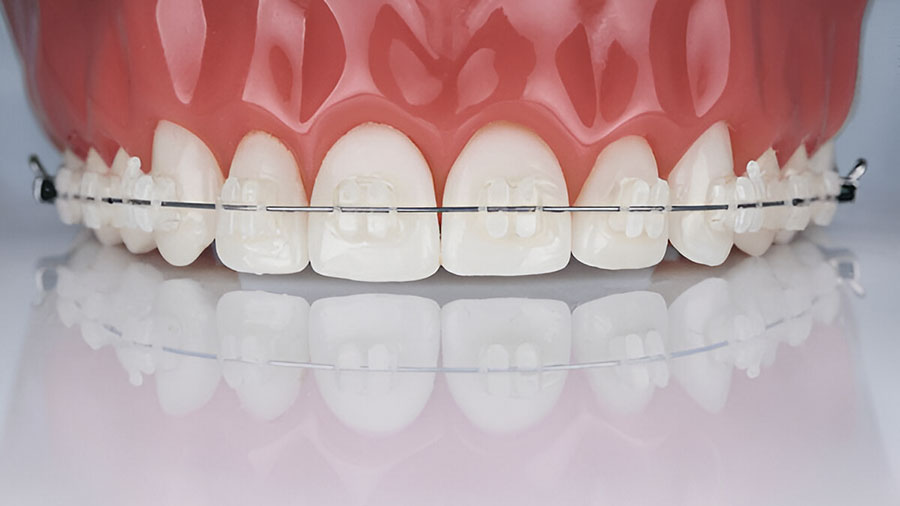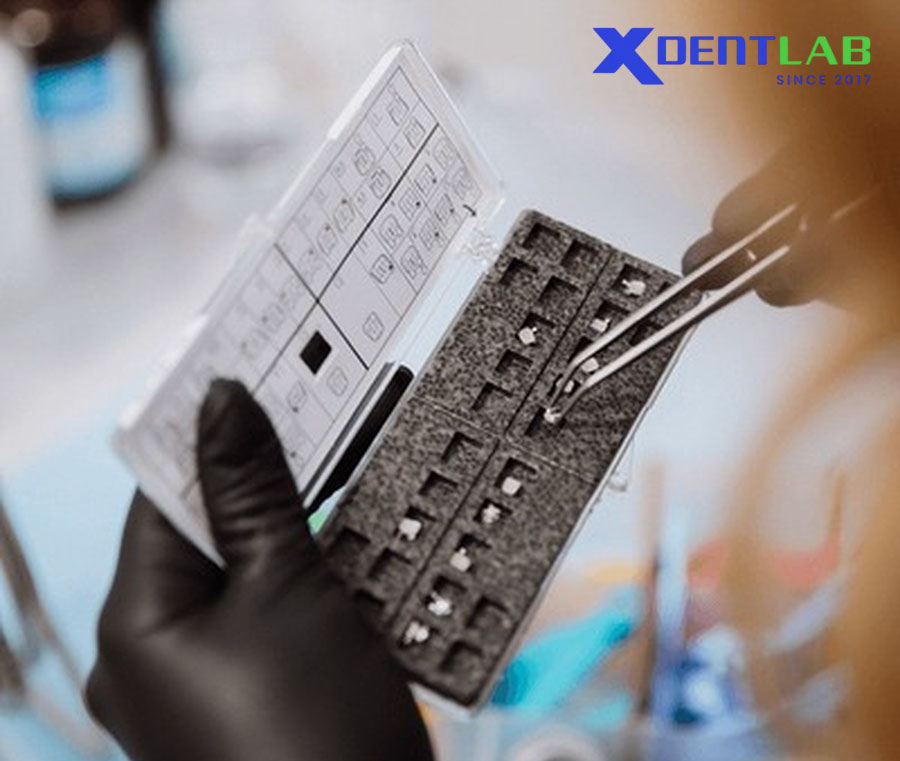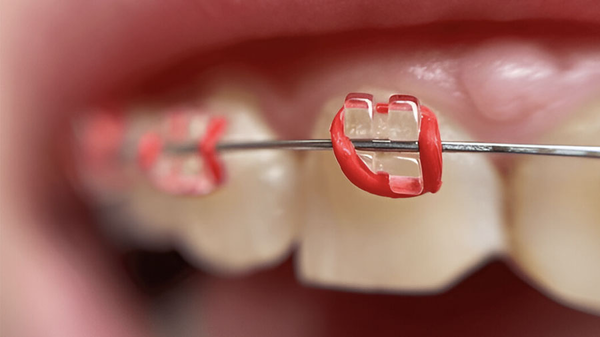Learn why polyurethane brackets are revolutionizing orthodontics with superior aesthetics, advanced reinforcement, and optimized clinical performance for modern dental practices.

Table of contents [Show]
- Introduction to Polyurethane Brackets
- Material Composition and Properties
- Reinforcement Technologies
- Frictional Characteristics
- Torque Stability and Expression
- Manufacturing Advances
- Clinical Performance
- Advantages of Polyurethane Brackets
- Limitations and Challenges
- Comparative Analysis with Other Materials
- Future Developments
- Clinical Guidelines
- Research Directions
- Conclusion
Introduction to Polyurethane Brackets
Polyurethane is an advanced polymer material increasingly used in orthodontic bracket technology. Distinguished by its versatile mechanical and aesthetic properties, polyurethane brackets are gaining recognition as a viable alternative to traditional ceramic, metal, and polycarbonate brackets. Recent academic studies highlight polyurethane’s unique characteristics, reinforcing its importance in modern orthodontics.
Material Composition and Properties
Chemical Structure
Polyurethane is a polymer defined by urethane linkages in its molecular structure. This material is widely used in orthodontics due to its:
Biocompatibility: Safe interaction with oral tissues.
Chemical Stability: Resistance to degradation in the oral environment.
Moldability: Ability to create complex and precise bracket designs.
Reinforcement Potential: Compatibility with fillers like fiberglass and ceramics for enhanced performance.
Mechanical Properties
Polyurethane brackets exhibit distinctive mechanical characteristics, including:
Elasticity: Greater flexibility compared to ceramic and metal brackets.
Stress-Strain Behavior: Predictable deformation under orthodontic forces.
Temperature Sensitivity: Changes in mechanical properties with temperature fluctuations in the oral cavity.
Reinforcement Technologies

Fiberglass Fillers
To improve the mechanical limitations of polyurethane, modern brackets incorporate fiberglass reinforcement, which provides:
Enhanced Strength: Increased resistance to deformation under orthodontic forces.
Dimensional Stability: Reduced creep and deformation during treatment.
Aesthetic Preservation: Maintenance of translucency despite reinforcement.
Advanced designs integrate ceramic or metal components to optimize performance:
Ceramic Inserts: Strengthen high-stress zones while maintaining aesthetics.
Metal Slots: Improve torque stability and reduce wear in critical areas.
Hybrid Designs: Combine multiple reinforcement strategies for durability and efficiency.
Frictional Characteristics
3D-Printed Polyurethane Brackets
Recent research on 3D-printed polyurethane brackets has revealed:
Low Friction Values: Superior sliding mechanics compared to zirconium and other materials.
Efficient Tooth Movement: Reduced force requirements for orthodontic adjustments.
Unique Surface Properties: Controlled surface roughness for optimized performance.
Comparative Friction Analysis
Polyurethane brackets outperform many conventional materials in terms of friction:
Lower Sliding Resistance: Facilitates smoother tooth movement.
Optimized Efficiency: Reduced treatment times due to improved mechanics.
Clinical Implications: Ideal for cases requiring precise force application.
Torque Stability and Expression
Torque Performance Studies
Polyurethane brackets reinforced with fiberglass or ceramics exhibit:
Improved Torque Stability: Enhanced three-dimensional tooth control.
Predictable Force Transmission: Reliable behavior under clinical loads.
Time-Dependent Behavior: Consistent torque expression throughout treatment.
Slot Dimension Integrity
Polyurethane brackets maintain slot integrity through:
Material Resilience: Resistance to permanent deformation during wire engagement.
Reinforcement Effects: Improved dimensional stability with hybrid designs.
Clinical Durability: Long-term reliability under orthodontic forces.
Manufacturing Advances
3D Printing Technology
The application of 3D printing in polyurethane bracket production has revolutionized manufacturing:
Customization: Patient-specific designs for improved fit and performance.
Precision: Accurate slot dimensions and controlled surface characteristics.
Cost Efficiency: Lower production costs for custom brackets.
Quality Control
Polyurethane bracket manufacturing involves rigorous quality assurance processes:
Material Selection: Ensuring biocompatibility and mechanical reliability.
Reinforcement Distribution: Strategic placement of fillers for optimal performance.
Testing Protocols: Standardized evaluations for consistent quality.
Clinical Performance
Sliding Resistance Analysis
Polyurethane brackets demonstrate reduced sliding resistance, contributing to:
Efficient Tooth Movement: Smoother mechanics during orthodontic adjustments.
Lower Force Requirements: Improved patient comfort and treatment efficiency.
Wire Interaction: Compatibility with various wire materials for optimal results.
Load-Bearing Capacity
Polyurethane brackets exhibit adequate strength for most clinical applications, with reinforcement further improving:
Durability: Reliable performance under typical orthodontic forces.
Failure Patterns: Predictable outcomes in high-stress scenarios.
Safety Margins: Reduced risk of bracket failure during treatment.
Advantages of Polyurethane Brackets

Clinical Benefits
Polyurethane brackets offer several advantages, including:
Aesthetic Appeal:
Translucency for natural tooth matching.
Resistance to staining and discoloration.
Consistent appearance throughout treatment.
Mechanical Performance:
Low friction for efficient tooth movement.
Resilience and recovery under orthodontic forces.
Predictable deformation and force transmission.
Biocompatibility:
Medical-grade material ensuring safety.
Minimal irritation to oral tissues.
Hypoallergenic properties for sensitive patients.
Treatment Efficiency:
Reduced treatment times due to lower friction.
Improved patient comfort with smoother mechanics.
Enhanced clinical outcomes with optimized designs.
Limitations and Challenges
Material Limitations
Despite its benefits, polyurethane brackets face certain challenges:
Strength Limitations: May require reinforcement for complex cases.
Creep Behavior: Time-dependent deformation under sustained forces.
Temperature Sensitivity: Variations in performance under extreme conditions.
Wear Characteristics: Surface degradation over extended treatment periods.
Clinical Considerations
Clinicians should consider:
Force Optimization: Careful application to prevent deformation.
Bracket Selection: Choosing reinforced designs for high-stress cases.
Monitoring Integrity: Regular evaluations during treatment.
Debonding Techniques: Minimizing damage during removal.
Comparative Analysis with Other Materials
Polyurethane vs. Polycarbonate
Compared to polycarbonate brackets, polyurethane offers:
Improved Friction Characteristics: More efficient sliding mechanics.
Better Reinforcement Options: Enhanced strength and durability.
Distinct Clinical Applications: Suitable for different treatment scenarios.
Polyurethane vs. Ceramic Brackets
When compared to ceramic brackets, polyurethane demonstrates:
Lower Friction Values: Improved efficiency during adjustments.
Greater Patient Comfort: Softer material reducing irritation.
Forgiving Failure Modes: Ductile fracture patterns instead of brittle failure.
Future Developments
Material Innovation
Ongoing research focuses on:
Advanced Composites: Reinforced polyurethane formulations.
Smart Materials: Responsive polymers for controlled force application.
Surface Engineering: Enhanced coatings for optimal performance.
Manufacturing Evolution
Future advancements include:
Digital Customization: Fully personalized bracket designs.
Sustainable Production: Eco-friendly manufacturing processes.
Real-Time Monitoring: Improved quality control systems.
Clinical Guidelines
Case Selection
Polyurethane brackets are ideal for:
Patients prioritizing aesthetics.
Moderate to complex malocclusions requiring reinforcement.
Cases demanding efficient sliding mechanics.
Patients with metal sensitivities.
Treatment Planning Considerations
Clinicians should optimize treatment by:
Selecting appropriate wire materials.
Monitoring bracket integrity regularly.
Adjusting mechanics based on material properties.
Research Directions
Key areas for future research include:
Long-Term Studies: Evaluating performance over entire treatment durations.
Material Optimization: Developing stronger and more durable polyurethane formulations.
Biomechanical Analysis: Understanding force transmission dynamics.
Surface Modifications: Enhancing frictional and aesthetic properties.
Conclusion
Polyurethane brackets represent a significant advancement in polymer orthodontic technology. Their unique combination of aesthetic appeal, mechanical performance, and biocompatibility makes them a versatile choice for modern orthodontic treatment. Reinforcement strategies and 3D printing technology further enhance their clinical potential, offering efficient and comfortable treatment options. As research continues and manufacturing evolves, polyurethane brackets are poised to play an increasingly prominent role in aesthetic orthodontics, particularly for patients seeking discreet and effective treatment solutions.
This article aligns with XDENT LAB’s commitment to providing innovative dental lab solutions that meet U.S. market standards. With expertise in lab-to-lab services and advanced technologies, XDENT LAB supports dental practices in delivering high-quality, aesthetic orthodontic solutions tailored to patient needs.
XDENT LAB is an expert in Lab-to-Lab Full Service from Vietnam, with the signature services of Removable & Implant, meeting U.S. market standards – approved by FDA & ISO. Founded in 2017, XDENT LAB has grown from local root to global reach, scaling with 2 factories and over 100 employees.. Our state-of-the-art technology, certified technicians, and commitment to compliance make us the trusted choice for dental practices looking to ensure quality and consistency in their products.

Our commitments are:
100% FDA-Approved Materials.
Large-Scale Manufacturing, high volume, remake rate < 1%.
2~3 days in lab (*digital file).
Your cost savings 30%.
Uninterrupted Manufacturing 365 days a year.
Contact us today to establish a strategy to reduce operating costs.
--------❃--------
Vietnam Dental Laboratory - XDENT LAB
🏢 Factory 1: 95/6 Tran Van Kieu Street, Binh Phu Ward, Ho Chi Minh City, Vietnam
🏢 Factory 2: Kizuna 3 Industrial Park, Can Giuoc Commune, Tay Ninh Province, Vietnam
☎ Hotline: 0919 796 718 📰 Get detailed pricing
Share this post:
Related Posts

Discover the properties, benefits, and limitations of polycarbonate brackets in orthodontics. Learn how advancements in material science are enhancing aesthetic and functional performance.

Polymer brackets explained: From material composition to clinical performance, learn how these aesthetic braces are advancing orthodontics.

Material selection in full arch implant-supported restoration defines both functional success and clinical longevity. Learn about the key variables influencing material choice, common materials used i...


